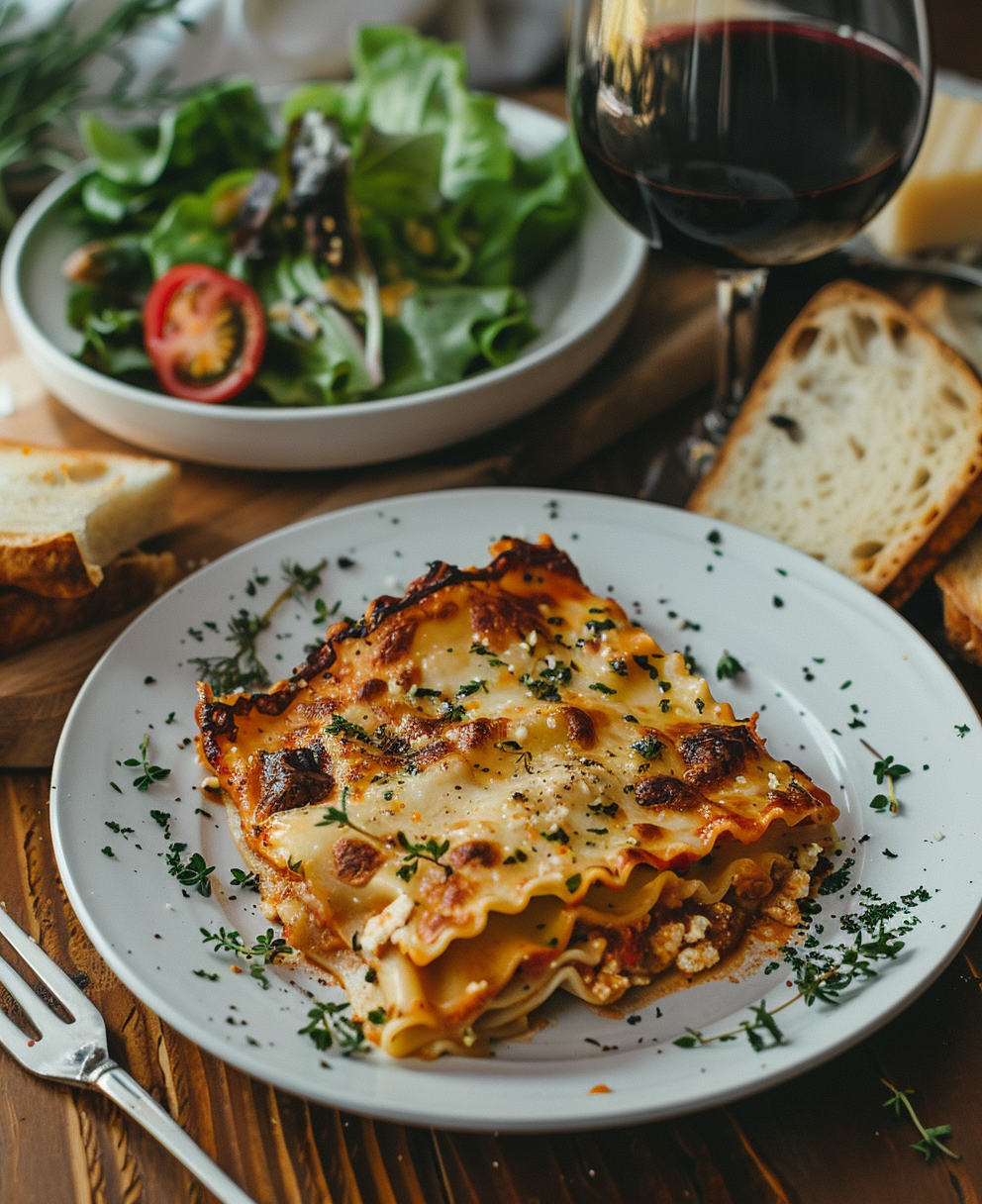
Why I Love Making Homemade Lasagna Noodles
I still remember the first time I made homemade lasagna noodles. It was a chilly Sunday afternoon, and I wanted to impress my family with something special. Little did I know, that decision would change how I thought about pasta forever. The smell of fresh dough, the silky texture of the sheets, and the rich flavor they added to the dish were unforgettable. Once you try homemade lasagna noodles, it’s hard to go back to store-bought.
Making your own pasta might sound like a lot of work, but trust me—it’s worth it. Kneading dough by hand or using tools like a KitchenAid mixer can turn this into a fun weekend project. Plus, there’s something deeply satisfying about creating something from scratch. Ahead, I’ll share tips for beginners, vegan options, drying methods, and more. Whether you’re curious about homemade lasagna noodles semolina or want to try homemade lasagna noodles no egg, this guide has you covered.
Are Homemade Lasagna Noodles Worth It?
Let’s get straight to the big question: Are homemade lasagna noodles worth the effort? My answer is a resounding yes. Sure, dried noodles from the store are convenient, but they don’t compare to the taste and texture of fresh pasta. There’s a reason chefs rave about it. Fresh noodles soak up sauce better, hold their shape during baking, and bring a depth of flavor you just can’t replicate.
I decided to make my own lasagna noodles after tasting a friend’s version at a dinner party. Her secret? She used homemade lasagna noodles semolina, which gave the pasta a slightly nutty flavor and firm texture. That meal inspired me to give it a shot myself. After a few tries (and some messy kitchen counters), I realized homemade pasta wasn’t just delicious—it was also a chance to experiment.
One of the best things about making your own noodles is customization. You can tweak the ingredients to suit your needs. For example, homemade lasagna noodles no egg are perfect for vegans or anyone avoiding eggs. Or, if you’re feeling adventurous, you can add spinach or beet juice for a pop of color and flavor.
Tools You’ll Need to Get Started
If you’re ready to dive into making homemade lasagna noodles, let’s talk tools. The good news is, you don’t need fancy equipment to get started. A rolling pin and some elbow grease will do the trick. But if you have access to a pasta machine—or even better, a KitchenAid attachment—you’ll save time and effort.
Here’s a quick rundown of what you might need:
- Rolling Pin: Perfect for flattening dough without a machine.
- Pasta Machine: Makes rolling and cutting easier. If you own a KitchenAid, the homemade lasagna noodles KitchenAid attachment is a game-changer.
- Sharp Knife or Pizza Cutter: Handy for cutting sheets evenly.
- Clean Work Surface: Plenty of space helps when rolling out dough.
Don’t worry if you don’t have all these tools. You can still make homemade lasagna sheets without a pasta machine. Simply roll the dough as thin as possible with a rolling pin, then cut it into rectangles. It takes a bit longer, but the results are just as rewarding.
If you’re short on time or not ready to tackle homemade pasta yet, consider buying fresh noodles instead. Look for “fresh lasagna noodles where to buy” online or check your local specialty grocery store. While not quite the same as homemade, fresh noodles are a step up from dried ones and can still elevate your dish.
Tips for Beginners
Making homemade lasagna noodles might seem intimidating at first, but it’s easier than you think. Start with a simple recipe and focus on mastering the basics. Here are a few tips to help you along the way:
- Use the Right Flour: Semolina flour works wonders for pasta. It gives the noodles structure and a slightly chewy texture.
- Don’t Skip Resting Time: Letting the dough rest makes it easier to roll out later. Aim for at least 30 minutes.
- Keep It Thin: Roll the dough as thin as possible. Thick noodles can turn mushy when baked.
- Dry Before Cooking: Lightly drying the noodles helps them hold up in the oven. Check out “how to dry homemade lasagna noodles” for detailed instructions.
A common question I hear is, “Do you have to boil homemade lasagna noodles before baking?” The answer depends on your recipe. Some cooks prefer parboiling to ensure the noodles cook fully, while others layer them raw and let the sauce soften them during baking. Experiment to see what works best for you.
Another tip: If you’re making a large batch, freeze the extra noodles for later. This lets you enjoy the benefits of make ahead lasagna with fresh pasta without starting from scratch every time.
Whether you’re a seasoned cook or a beginner, making homemade lasagna noodles is a rewarding experience. With a little practice, you’ll be whipping up restaurant-quality pasta in no time. Keep reading to learn more about vegan options, drying techniques, and expert advice for perfect noodles every time.
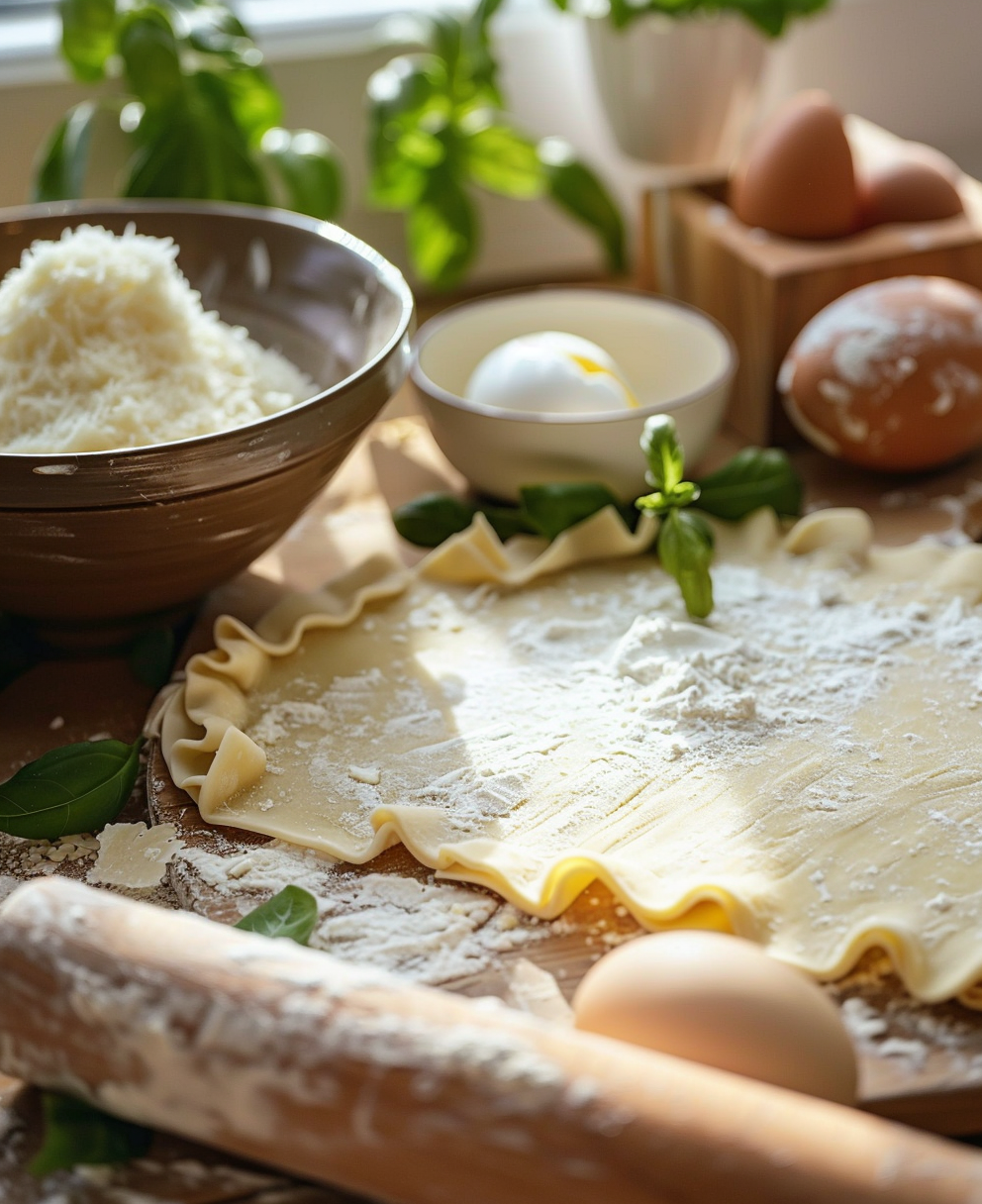
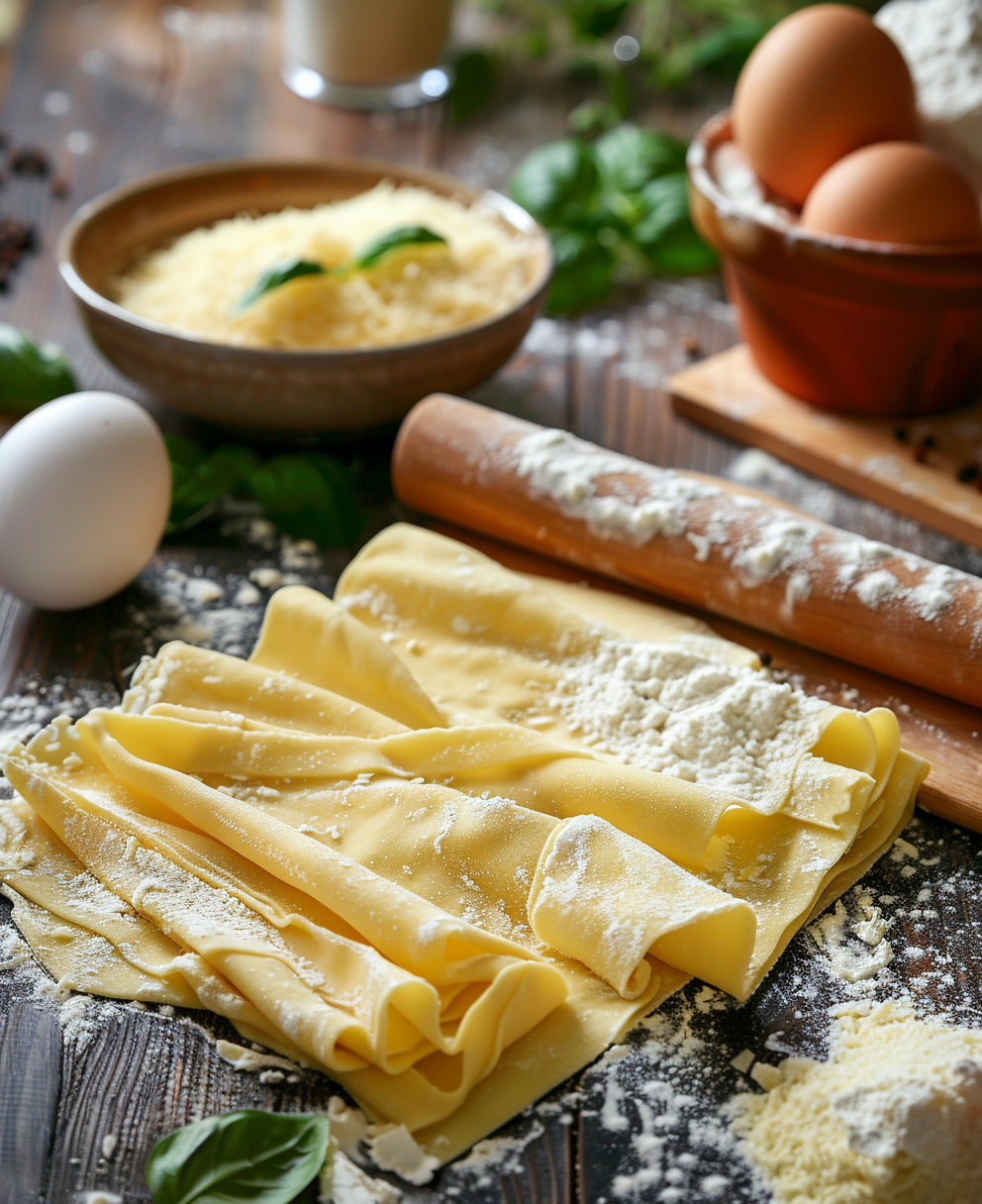
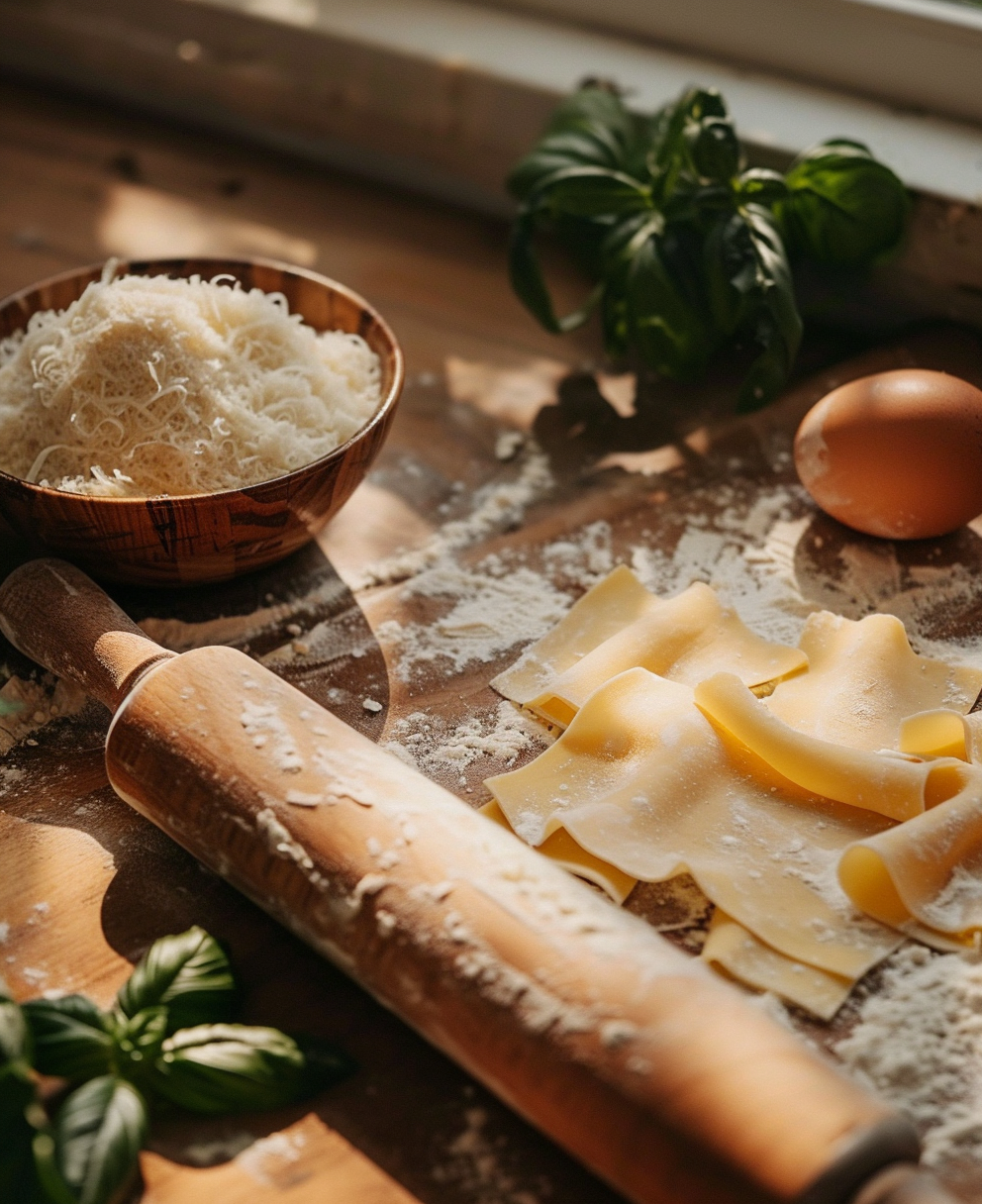
Step-by-Step Guide to Making Homemade Lasagna Noodles
Alright, let’s roll up our sleeves and get into the nitty-gritty of making homemade lasagna noodles. If you’ve been wondering how to take your pasta game to the next level, this is it. By the way, if you’re anything like me, you’ll find the process oddly therapeutic. It’s kind of like kneading stress right out of your system. Let’s dive in.
Preparing the Dough
First things first: dough is the heart of your lasagna noodles. To make basic dough, you’ll need flour, eggs, and a pinch of salt. For that classic chewy texture, I highly recommend using semolina flour. It’s what gives gluten-free lasagna noodles their structure (though we’ll get to vegan options later). Semolina has this slightly grainy texture that makes the noodles sturdy yet tender after baking.
Now, here’s where it gets fun. If you’re aiming for homemade lasagna noodles no egg, don’t panic. You can swap the eggs with water or even aquafaba—the liquid from canned chickpeas. Sounds weird, but trust me, it works wonders. I once made a batch for my vegan friend, and she swore they tasted better than store-bought. Just mix your dry ingredients, add your wet ones, and knead until the dough feels smooth and elastic. Think of it like giving your dough a little spa treatment—it should feel supple, not sticky.
Do homemade noodles need to dry before cooking? Funny enough, this is a hotly debated topic. Some folks swear by letting the dough rest for 30 minutes before rolling, while others skip straight to drying. Honestly, it depends on your timeline. If you’re planning to use the noodles immediately, a quick rest will do. But if you’re prepping for later, drying them helps prevent sticking and ensures they hold up during baking. More on drying techniques coming up soon.
Rolling Out and Cutting the Noodles
Once your dough is ready, it’s time to roll it out. This part can be a bit tricky if you’re new to pasta-making, but don’t worry—I’ve got your back. Here’s the thing: you want the dough as thin as possible without tearing it. Thick noodles might seem cozy, but they can turn gummy when baked. Aim for something close to what you’d see in a restaurant-quality dish, like the kind you’d find in To Die For Fettuccine Alfredo.
If you’ve got a KitchenAid mixer with a pasta attachment, now’s the time to break it out. The roller makes life so much easier, and you’ll end up with perfectly even sheets. No pasta machine? No problem. A rolling pin works just fine—you just need a bit more patience. Dust your work surface with flour to keep things from sticking, then roll away. Pro tip: Roll the dough in one direction at first, then rotate it 90 degrees to maintain an even thickness.
When it comes to cutting, precision matters. Use a sharp knife or pizza cutter to slice the dough into rectangles. They don’t have to be perfect—mine rarely are—but try to keep them uniform so they cook evenly. If you’re unsure about sizing, imagine laying them over your lasagna pan. Too big? Trim them down. Too small? Overlap them slightly. Simple, right?
Funny story: My first attempt at cutting noodles was a disaster. I ended up with wonky shapes that looked more like abstract art than lasagna sheets. But guess what? It still tasted amazing. So don’t stress too much about perfection. Oh, and if you’re a visual learner, check out tutorials like “YouTube homemade lasagna noodles” for some hands-on inspiration.
Drying vs. Immediate Use
Now, let’s talk about drying. Drying your noodles is optional, but it does offer some perks. For instance, dried noodles are less likely to stick together, which is clutch if you’re layering them raw in your lasagna. Plus, drying lets you prep ahead of time, making it ideal for busy days. Think of it as your secret weapon for make ahead lasagna with fresh pasta.
So, how do you dry them? There are two main methods: air-drying and oven-drying. Air-drying is simple—just lay the noodles flat on a floured surface or hang them over a drying rack. Leave them out for an hour or two, depending on humidity levels. Oven-drying is faster; set your oven to its lowest setting and bake the noodles for about 10 minutes. Keep the door slightly ajar to let moisture escape.
But what if you’re short on time? No worries—you can totally skip the drying step. Just toss the fresh noodles directly into your lasagna layers. They’ll soften as they bake, soaking up all that delicious sauce. Personally, I love this method because it saves time, though I admit dried noodles have a slight edge in texture. Either way, you’re winning.
Speaking of shortcuts, if you ever find yourself craving lasagna but don’t feel like making noodles from scratch, consider checking out crockpot chicken and noodles. It’s a completely different dish, sure, but it satisfies that comfort-food craving in a pinch. Or, if you’re feeling adventurous, whip up a batch of Homemade Mac and Cheese instead. Both are great ways to flex your pasta skills without committing to a full lasagna project.
One last question I get a lot: Do you need to soak lasagne sheets before cooking? Nope! Unlike boxed noodles, fresh pasta doesn’t require pre-soaking. Whether you’re using dried or undried noodles, they’ll cook beautifully as long as your sauce has enough liquid. Just layer them in, pop the dish in the oven, and let the magic happen.
At the end of the day, making homemade lasagna noodles is about experimentation and having fun. Sure, there’s technique involved, but it’s also about creating something uniquely yours. Whether you go the traditional route with eggs and semolina or opt for a vegan twist, the results will speak for themselves. And hey, if you mess up a batch or two, who cares? That’s how you learn. Happy noodle-making!
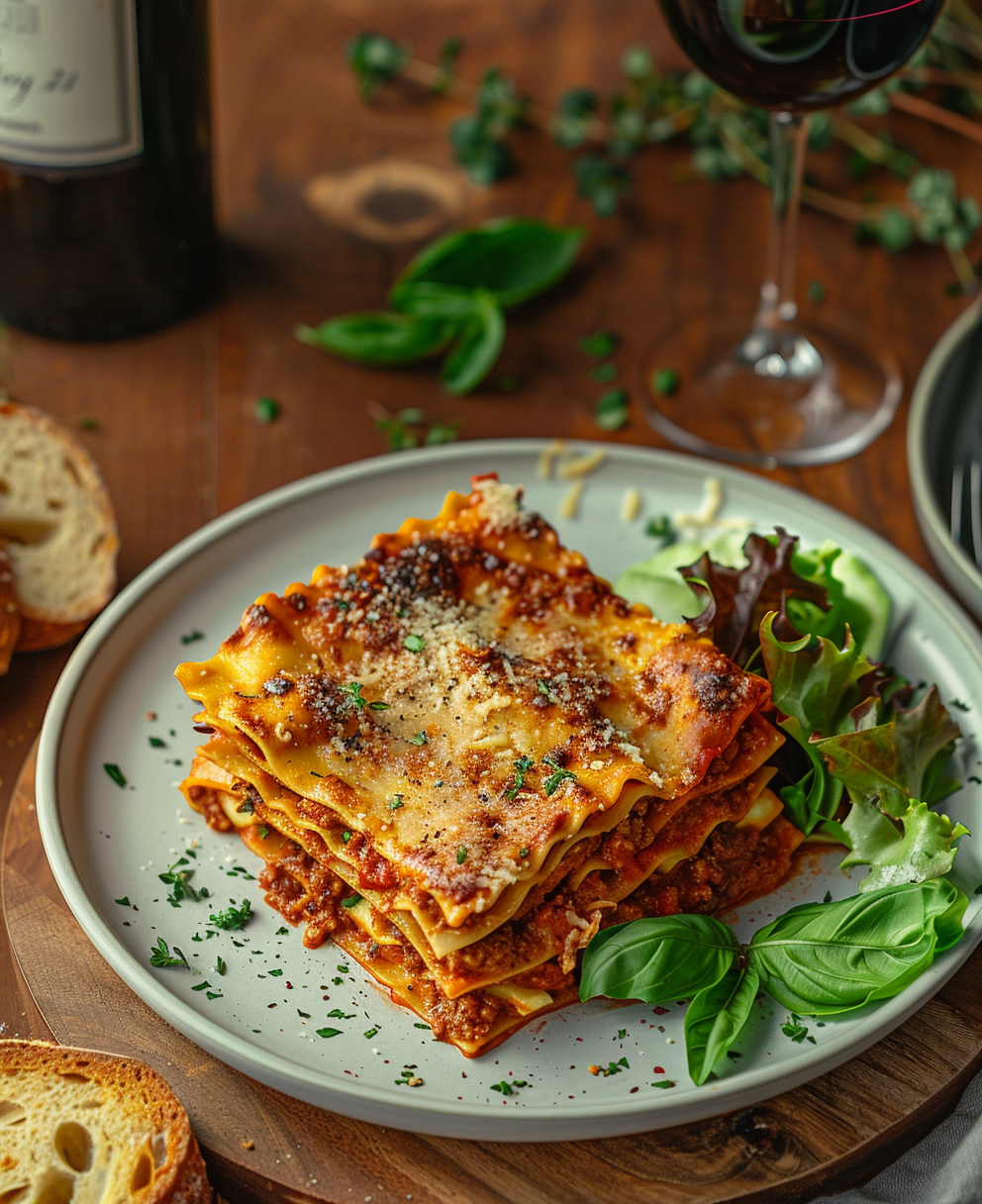
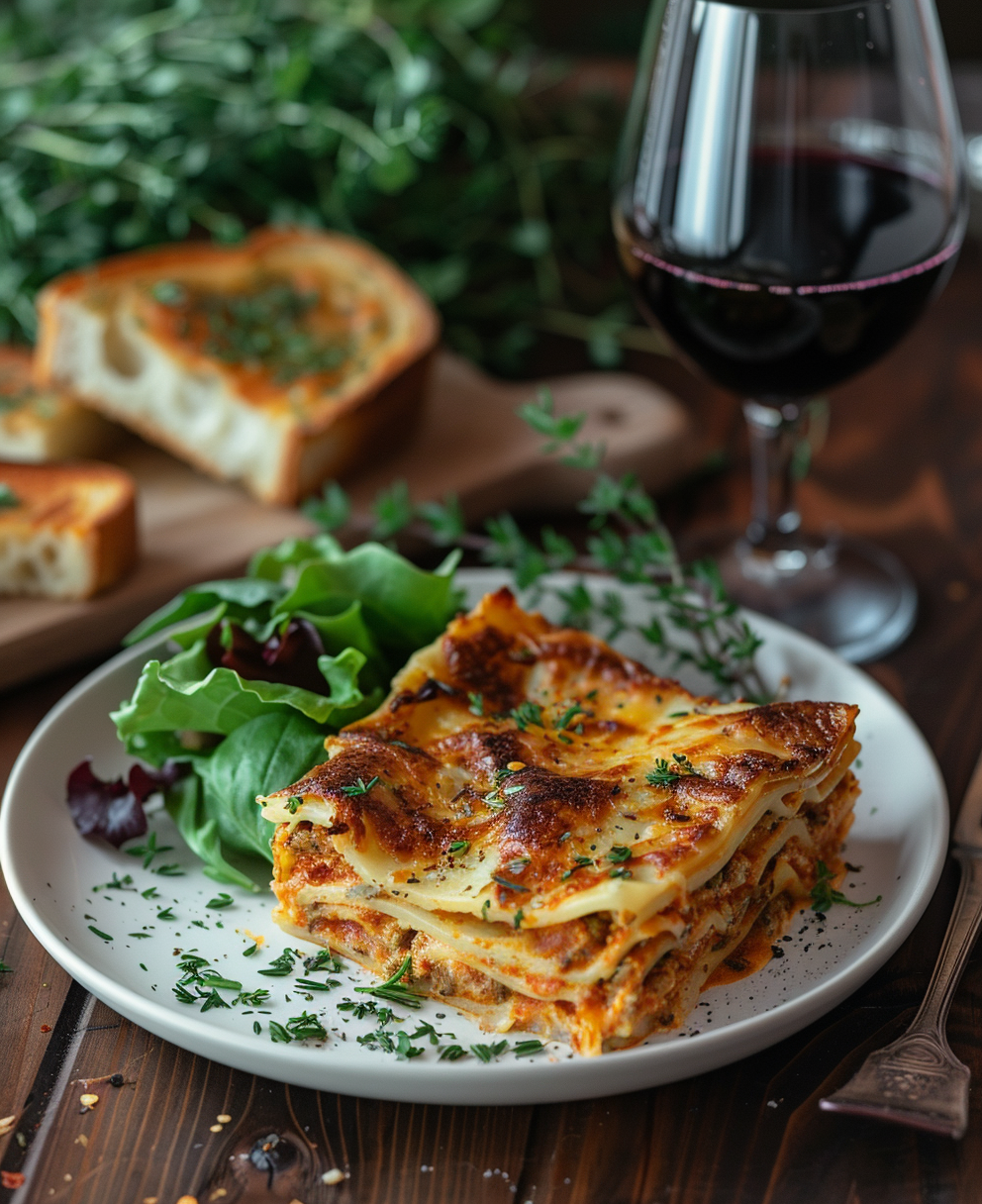
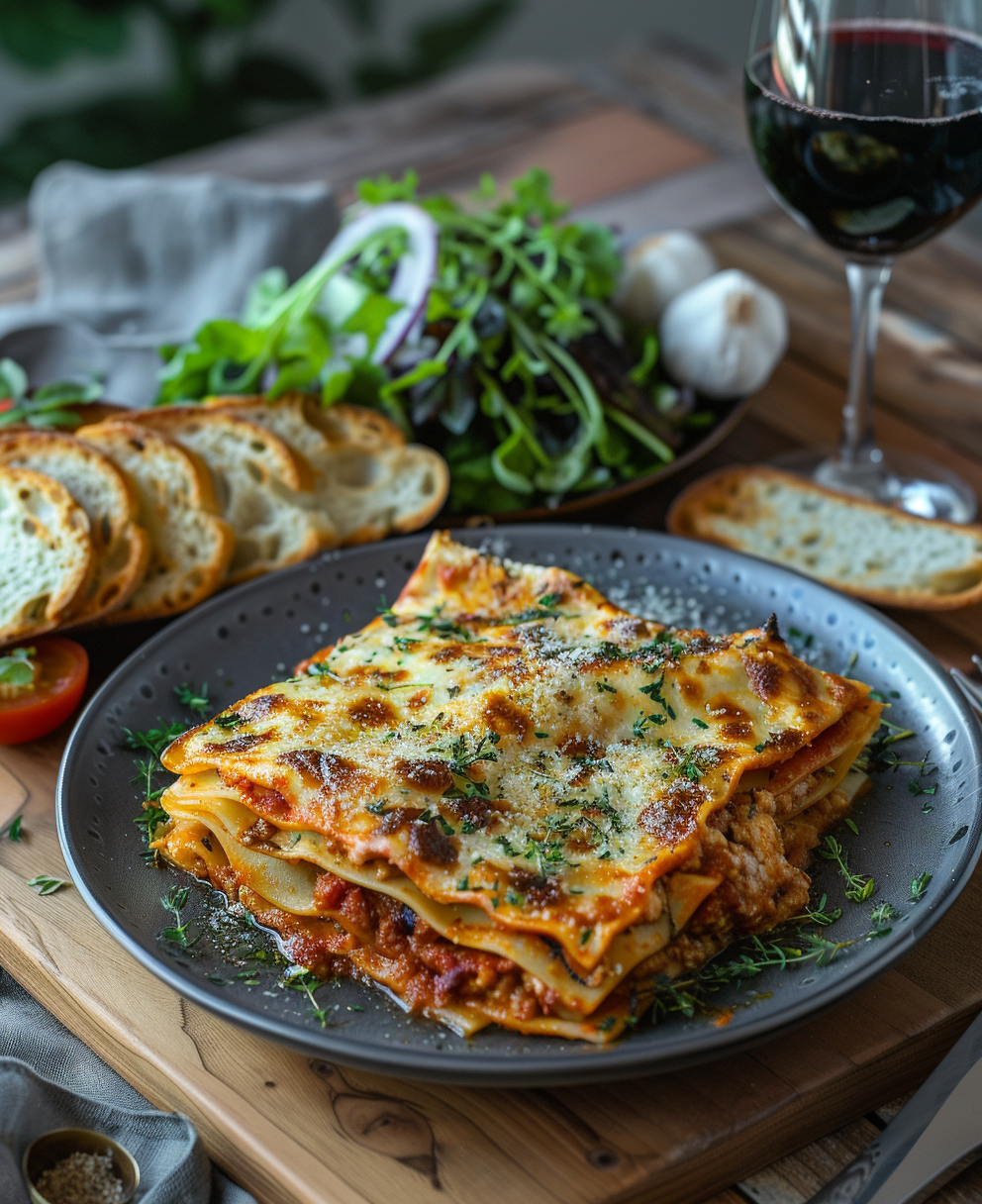
Cooking Your Homemade Lasagna Noodles
Let’s talk about the moment of truth: cooking those beautiful homemade lasagna noodles you’ve worked so hard to create. It’s not just about tossing them into a pot of water and hoping for the best. There’s a bit of nuance here, trust me. By the way, if you’re wondering whether you need to boil your noodles before baking, I get it. That’s one of the most common questions I hear, and the answer might surprise you.
Here’s the thing: boiling isn’t always necessary. If your sauce is nice and saucy (yes, that’s a technical term), the noodles will soften as they bake. Raw noodles absorb liquid from the sauce, which can actually enhance the flavor. But—and this is a big but—if your sauce is on the thicker side or you’re worried about undercooked pasta, giving the noodles a quick pre-boil can be a lifesaver. Just don’t overdo it; aim for al dente. Think of it like a warm-up before the main event.
Now, what about soaking? Do you need to soak lasagne sheets before cooking? Honestly, soaking is kind of like the middle child—it’s not as popular as boiling or drying, but it has its moments. Soaking works especially well if you’re short on time but still want to avoid raw noodle mishaps. Simply submerge the noodles in hot water for 10–15 minutes until they’re pliable. This method is perfect when you’re layering them straight into the dish without any extra prep.
And then there’s the ultimate question: how to cook lasagna noodles perfectly every time? My golden rule? Pay attention to texture. Whether you’re boiling, soaking, or going straight to baking, make sure the noodles are tender but still hold their shape. Nobody likes a mushy lasagna disaster, right? Also, don’t overcrowd the pot if you’re boiling. Give those noodles room to swim freely—it makes all the difference.
Tips and Tricks for Success
Okay, let’s get real for a second. We all make mistakes, especially when trying something new. I’ve been there—trust me. One time, I accidentally rolled my dough too thick, and my lasagna ended up looking more like a brick than a dish. Lesson learned: thin is key. Here are a few other tips to help you avoid common pitfalls:
- Don’t skimp on flour dusting: Sticky dough is no fun. Keep your work surface well-floured to prevent disasters.
- Experiment with flavors: Try adding herbs like basil or oregano to your dough for an extra kick. Or go bold with beet juice for vibrant pink noodles!
- Test small batches first: If you’re tweaking a recipe, like making homemade lasagna noodles no egg, start with a small batch to see how it turns out before committing to a full lasagna’s worth.
By the way, if you’re going the vegan route, aquafaba really is your best friend. I mentioned it earlier, but seriously—it’s magic. The first time I used it, I was skeptical. Could chickpea water really replace eggs? Spoiler alert: yes, yes it can. It binds the dough beautifully and adds just enough moisture to keep things smooth.
Funny enough, one of the biggest challenges I faced early on was figuring out how much dough to make. Sometimes I’d end up with way too much, other times not enough. Now I always err on the side of caution and make a little extra. Leftover noodles freeze brilliantly, so it’s never wasted effort. Plus, having a stash of make ahead lasagna with fresh pasta in the freezer feels like having a secret weapon for busy nights.
If you’re curious about tools, remember that you don’t *need* a fancy setup. Sure, a KitchenAid mixer with a pasta attachment makes life easier, but rolling by hand builds character. And hey, there’s something satisfying about saying, “I did this without a machine.” For inspiration, check out some tutorials on pasta recipes. You’ll find plenty of ideas for mastering techniques beyond lasagna noodles.
FAQ Section
Are homemade lasagna noodles worth it?
Absolutely. They elevate your dish with unmatched flavor and texture. While store-bought noodles are convenient, nothing beats the silkiness and richness of fresh pasta. Plus, making them yourself is incredibly rewarding.
Do homemade noodles need to dry before cooking?
Not always. Drying helps prevent sticking and improves texture, but it’s optional. If you’re using them immediately, a quick rest is sufficient. For longer storage, drying or freezing is ideal.
Do you have to boil homemade lasagna noodles before baking?
Nope. Boiling is optional. If your sauce has enough liquid, the noodles will soften during baking. However, pre-boiling ensures even cooking, especially with thicker sauces.
Do you need to soak lasagne sheets before cooking?
Soaking is an alternative to boiling. Submerge the noodles in hot water for 10–15 minutes until pliable. This method saves time while ensuring the noodles cook evenly.
Can I use semolina flour for homemade lasagna noodles?
Yes! Semolina gives the noodles a firm texture and slightly nutty flavor. It’s highly recommended for authentic results.
How do I store leftover homemade lasagna noodles?
Dry them thoroughly, then store in an airtight container at room temperature for up to three days. For longer storage, freeze the noodles in a single layer on a baking sheet before transferring to a freezer bag.
What’s the best way to cut lasagna noodles evenly?
Use a ruler or measure against your lasagna pan. A pizza cutter or sharp knife works well, but a pasta machine ensures precision if you have one.
Can I make vegan lasagna noodles?
Definitely. Replace eggs with aquafaba or water. The result is just as delicious and pairs perfectly with plant-based fillings.
Why are my noodles sticking together?
They likely need more flour during rolling or drying. Dust generously and space them apart while drying to prevent sticking.
Where can I buy fresh lasagna noodles?
Check specialty grocery stores or Italian markets. Alternatively, search online for local suppliers who offer fresh pasta options.
Final Thoughts
Making homemade lasagna noodles isn’t just about food—it’s about connection. Every step, from kneading the dough to layering the noodles, brings a sense of accomplishment that’s hard to beat. Whether you stick to classic semolina or venture into vegan territory, the process is yours to personalize. So grab your ingredients, roll up your sleeves, and give it a shot. Who knows? You might discover a new favorite hobby.
Oh, and if you nail a batch—or even if you don’t—I’d love to hear about it. Share your stories, ask questions, or tell me what worked (or didn’t). After all, we’re all learning together.

Homemade Lasagna Noodles
Ingredients
Equipment
Method
- Mix the semolina flour and salt in a bowl.
- Create a well in the center and add the eggs (or water/aquafaba).
- Knead the dough until smooth and elastic; if sticky, dust with flour.
- Let the dough rest for at least 30 minutes.
- Roll out the dough as thin as possible using a rolling pin or pasta machine.
- Cut the rolled dough into rectangles for lasagna sheets.
- If desired, dry the noodles on a floured surface or a drying rack for at least an hour.
- Store or use the noodles immediately in your lasagna dish.
